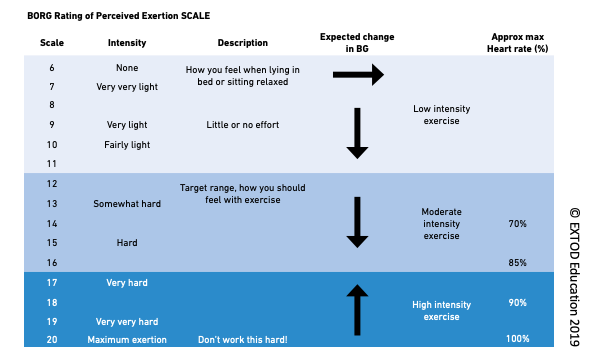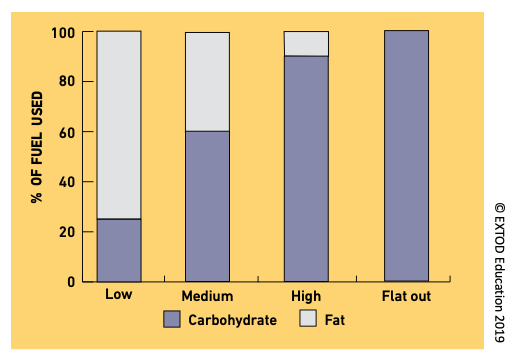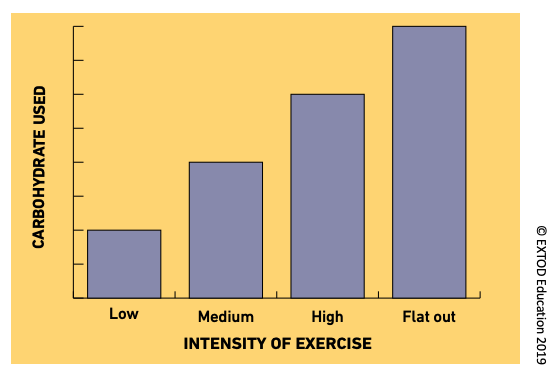 Advice for Professionals
Advice for Professionals

Defining intensity of exercise
Exercise intensity refers to how much work is being done when exercising. The intensity has an effect on what fuel the body uses and how much. Intensity can be measured a number of ways but the two most common are:
Percentage of maximum heart rate (Figure 1) The maximum heart rate (MHR) is the highest heart rate an individual can safely achieve through exercise stress, and depends on age. The best formula for calculating this is MHR = 208 − (0.7 × age). For example, if you are 45 years old: 208-(0.7 × 45 =31.5) = 177 (176.5). |
Borg Scale of Perceived Exercise (Figure 1) The Borg Scale is a simple method of rating perceived exertion (RPE) and can be used to gauge the level of intensity in training and competition. The most commonly used scale is shown below in Figure 3.3. |
Figure 1 - Maximum heart rate (MHR) compared to Borg Scale (RPE)

Most people would define 4 levels of intensity for exercise, these are:
Low Intensity (up to 70% Maximum Heart Rate [MHR] or Rating Perceived Exertion [RPE] 14) Training at this level improves general fitness and the ability of the muscles to use oxygen. This level of intensity can be maintained for a long time. |
Medium Intensity (70-85% MHR or RPE 14-16) This is the most intense training that one can do without developing an oxygen debt (the exercise becoming anaerobic). This level of intensity can also be maintained for a long time, if you are fit. |
High Intensity (85-90% MHR or RPE 16-18) Training at this level builds up some oxygen debt, so some of the exercise is being done without oxygen. This intensity of exercise places a load on the heart causing it to become stronger. This level of activity can only be done for a short period of time |
Flat Out (90-100% MHR or RPE 18-20) At this level the body works completely anaerobically, causing a quick build-up of lactic acid. This level of activity can only be done for a short while. |
The reason you want to know about the intensity of exercise that your patient is doing is because it will affect the advice you give on how much carbohydrate needs to be taken during exercise and what needs to be taken post exercise. See Carbohydrates for exercise for people on multiple daily injections, Carbohydrate for exercise for people on insulin pumps, Fuel and fluid for exercise, sections of this site for more information on this.
Effect of intensity on fuels used during exercise
During exercise, two main fuels are used: fat and carbohydrate. The higher the intensity, the more energy is burnt per minute. At low-intensity, fat is the main source of fuel, whereas at a higher intensity of exercise, carbohydrate takes over as the main source (see Figure 2). At the highest intensity, only carbohydrate will be burnt.
Figure 2 - Amount of carbohydrate and fat burned at different exercise intensities.

This means that has the intensity of exercise goes up more carbohydrate will be required by the muscles (see Figure 3).
Figure 3 - Amount of carbohydrate needed for different exercise intensities.

Patients with Type 1 Diabetes have no problems producing and burning fat when they exercise. In contrast, they do have problems producing carbohydrate during exercise (see Physiology of exercise section of this website). This can mean that blood glucose levels fall when they exercise.
To return to Defining type, duration and activity of exercise click here.
To go onto defining length of activity click here.
